Most of us can’t resist cute baby animals, especially dogs. After all, dogs are considered to be man’s best friend and can easily be integrated as part of the family. But what if we adopt a dog that ends up becoming unlike any of the other dogs?
This is exactly what a family in China experienced when they adopted a cute puppy that grew up to be 3 feet tall and 250 pounds. With this unexpected turn of events, the owners began to suspect that something was wrong. And they turned out to be correct.
Meet Little Black & His Adoptive Family
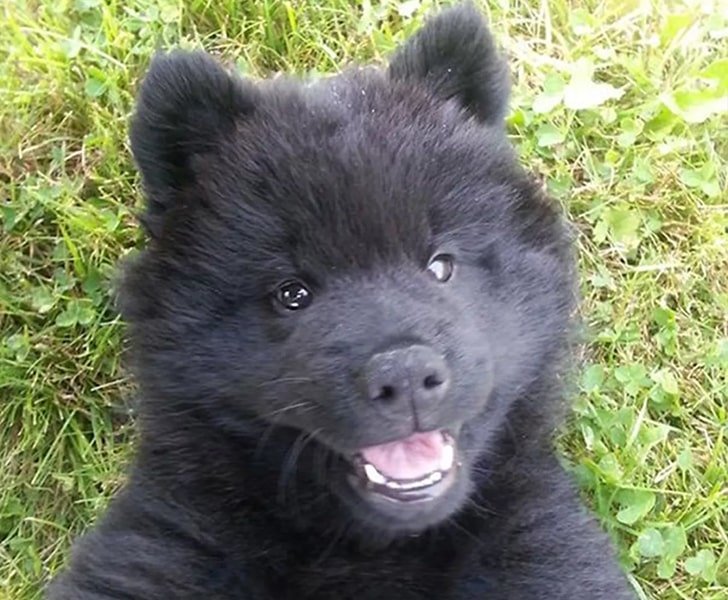
Su Yun, her husband, and their children lived in the city of Kunming in Yunnan, China. They were spending their family holiday trip in another part of the country when by chance they came across a puppy they couldn't help but fall in love with.
Su and her family hadn’t planned on adopting a puppy, but they decided to buy this cute pup right then and there. By the time they returned home, they already had a name for him. They thought that the name Little Black suited the newest addition to their family, a black Tibetan mastiff.
The Dog That Could Stand Up
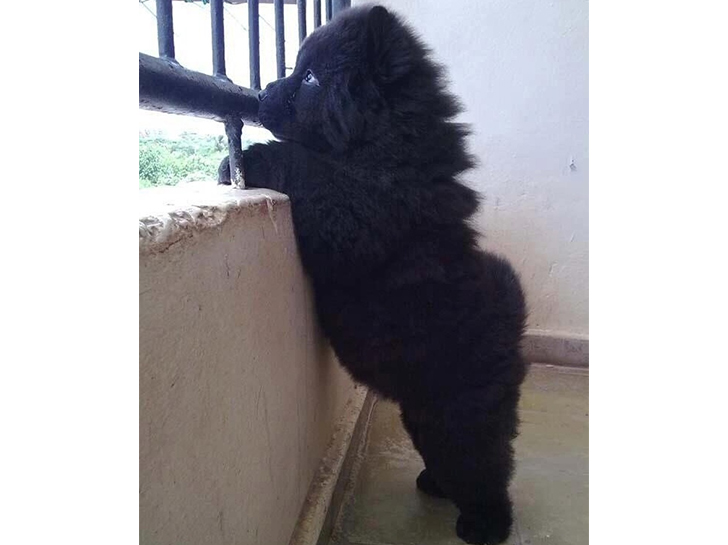
As Little Black grew up, he began to develop unusual characteristics. At first, Su and her family dismissed them. They were shocked, however, when he started standing up. Normal dogs can’t stand up for long periods of time, even when they're trained to do it. But Little Black was doing it all the time.
The family often saw Little Black walking on his hind legs despite having never been trained for it. And the sight always terrified Su because his body was so huge. Su eventually realized that her pet was probably not a dog, whereupon she called the authorities to report what she had seen.
Confirming The Truth
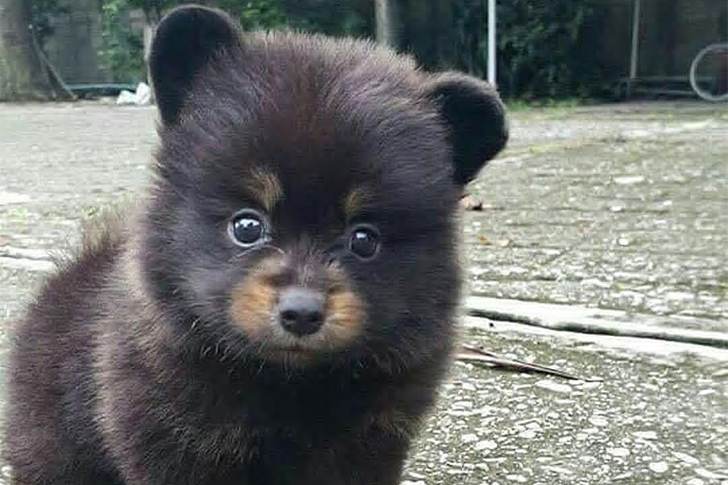
Once the authorities arrived, Su took them to Little Black while he was busy eating. She and her family were astonished when they found out Little Black had been confirmed to be not a dog but a bear – a healthy Asiatic black bear, to be precise.
Given today's technology and the peculiarity of this incident, it's not surprising that the story garnered media attention worldwide. It was featured on National Geographic, People Magazine, and Business Insider, demonstrating that people from many different walks of life have been captivated by Su's story.
Characteristics Of A Tibetan Mastiff
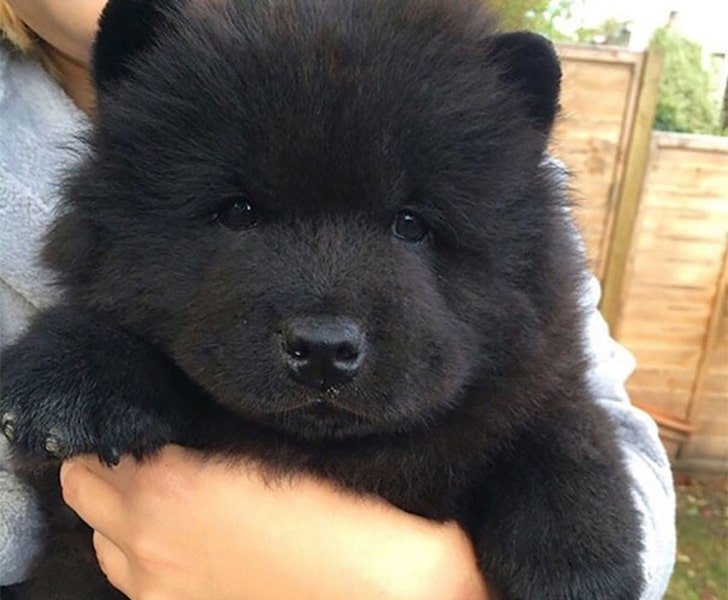
For the benefit of those who are unfamiliar with the breed, the Tibetan mastiff is known as one of the oldest breeds that have ever existed in China, dating back as far as 1100 B.C. These dogs are very loyal and protective of their families.
However, Tibetan mastiffs can be quite stubborn, so new owners of mastiff puppies need to start obedience training and the socialization process right away. Otherwise, these dogs tend to become erratic and unsafe. It may also be rather challenging to walk such a gigantic dog.
The Best Eater In Town
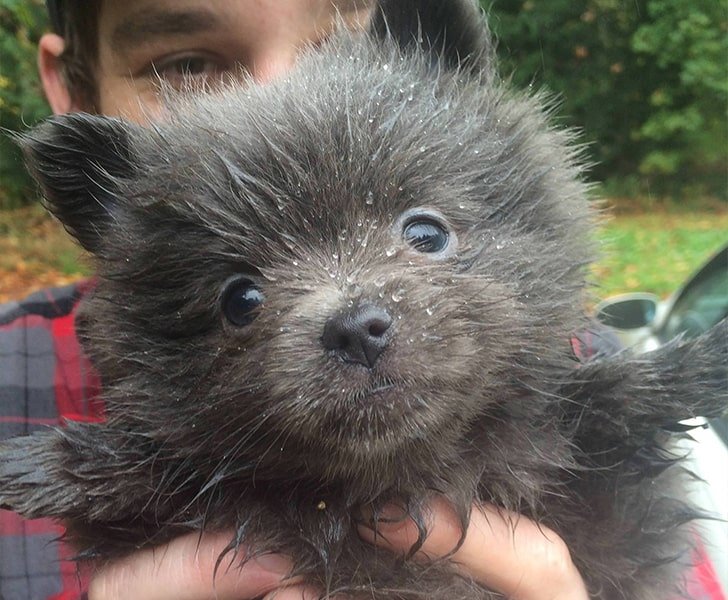
We can safely assume that Su and her husband knew what they were getting themselves into when they brought a Tibetan mastiff home with them. After all, Little Black was going to be living with their children for a long time as the family dog.
When the family returned home, Little Black immediately seemed to enjoy his new surroundings. He was eating very well every time they fed him, so Su determined that he had no issues adapting to his new home. They all hoped his health wouldn’t be a problem as he grew to his enormous full size.
Growing Up Fast & Well
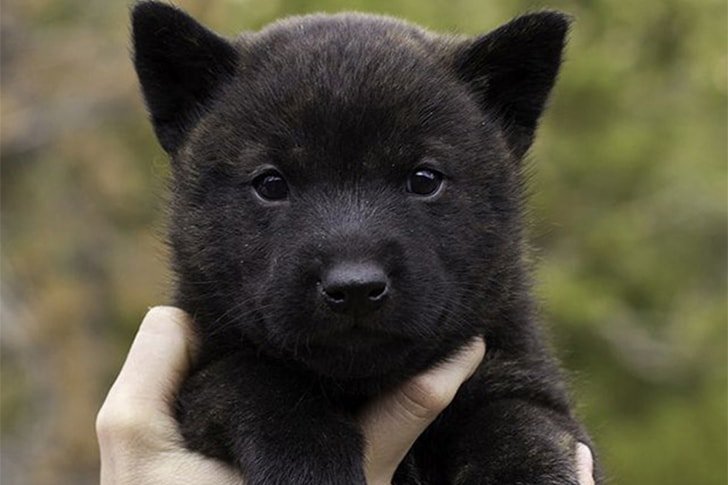
With all the food he was consuming, Su and her family weren’t surprised to see Little Black undergo a lot of weight gain. That was pretty normal for any puppy. In only a few months, the adorable pup was already showing a considerable amount of growth.
Watching Little Black grow so fast made the family very happy, of course. How could they not be ecstatic that their pet was doing so well? And so they continued to give him as much as food as he wanted. They couldn’t wait to see him full grown.
Too Big For A Two-Year-Old
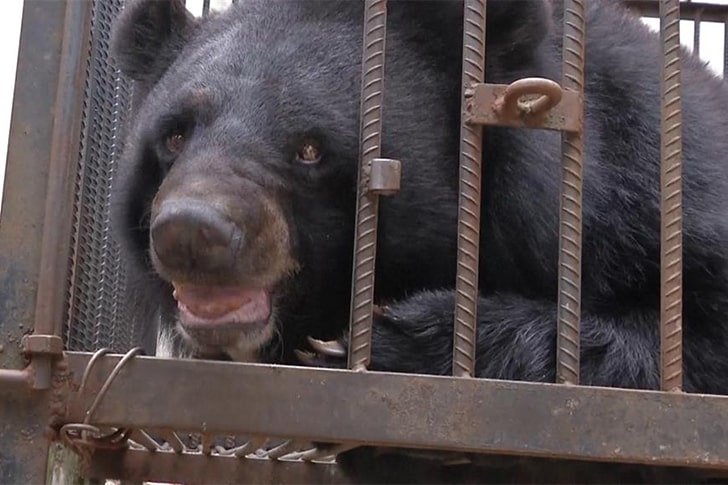
Su felt that Little Black could eat more, so she decided to give him as much food as his stomach could take. When their pet turned one year old, the family started feeding him a special diet because he seemed to have an insatiable appetite.
Imagine giving a dog a carton of fruit and two heaps of noodles – every single day! When Little Black reached two years old, Su began feeling a little bit scared of her own dog. At this age, his size had grown way beyond the family's expectations.
Keeping Their Pet Contained
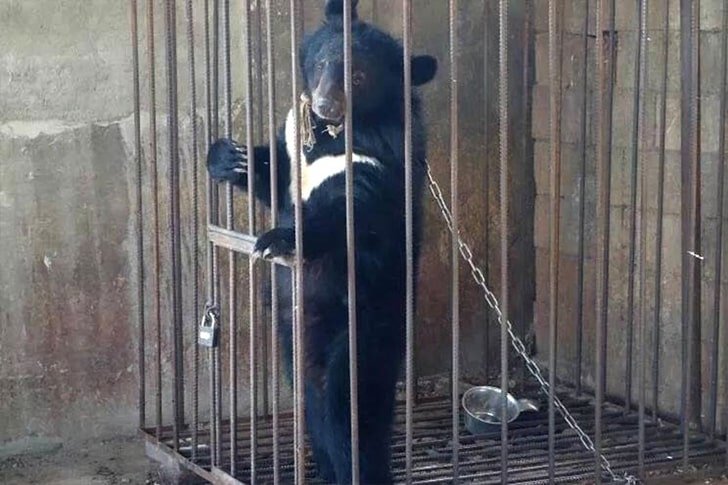
Apparently, Su wasn’t the only one who felt frightened of Little Black as a huge animal. So did the rest of her family. Initially, they thought it was kind of cool to have a bigger dog than everyone else's, but they soon began to feel otherwise.
The family’s property had a house in the back, and they decided to keep Little Black there. Whenever they visited him, he growled at them. That was when they started getting scared and confused, and it was one of the first unusual traits Su noted. Little Black didn’t bark; he roared and growled.
Noticing His Odd Features
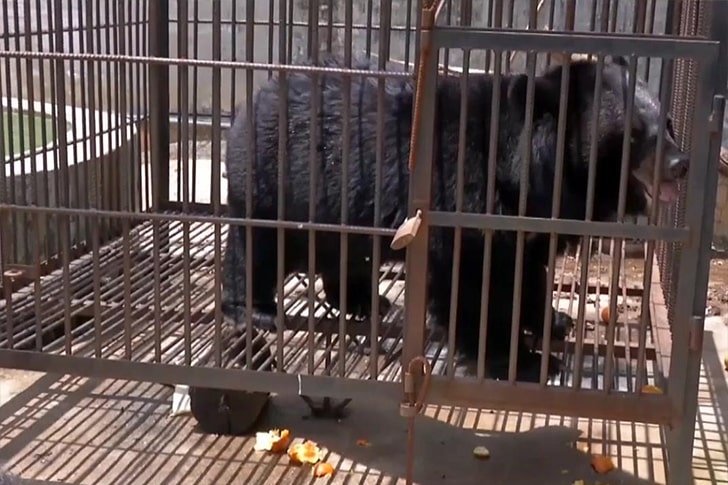
Aside from his growth above and beyond her expectations, Su also observed Little Black’s physical appearance. She noticed that some of his features were unlike anything she had ever seen on other canines, even the biggest ones around. Nonetheless, she continued to dismiss such notions.
Su even dismissed the fact that Little Black had larger teeth than usual. She rationalized that it was only natural for all the parts of his body to be proportionately large. Though she hid her troublesome thoughts from her family, they continued to bother her.
Suspicions Began To Arise

As much as Su and her family wanted to be happy to see Little Black growing so large with the healthy diet they were giving him every day, they couldn’t help but feel a bit curious. How was it happening so fast? Su had her suspicions, but she always just ignored them.
One day, however, Su was surprised when she caught Little Black standing upright on his hind legs. She rationalized that dogs do stand up sometimes, but seeing her pet in that position gave her an unexpected mental image. Instead of a dog, Little Black was beginning to look like a different animal to her.
He Didn't Look Like A Dog Anymore
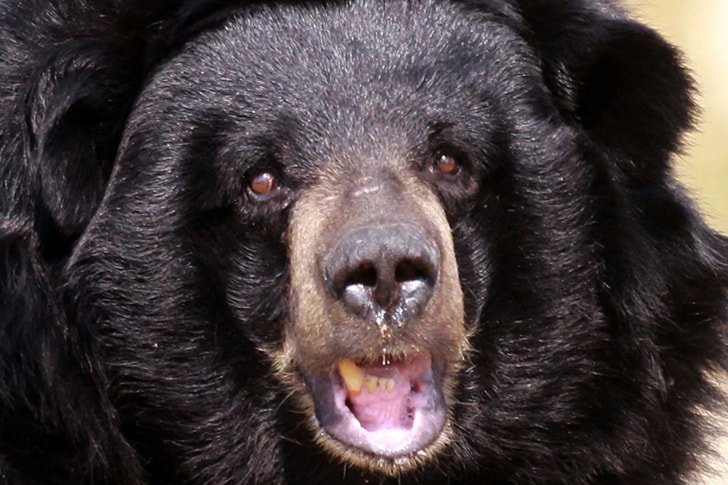
As each day passed by, Little Black’s unusual features became more and more pronounced, so that Su's entire family began to notice the differences. As he transformed before their eyes, they came to the realization that their dog didn’t bear any resemblance to a Tibetan mastiff.
Finally, Su and her family concluded that their pet was not even a dog. At that moment, Su was truly terrified and didn’t know how to handle the situation. The more Little Black matured, the more her suspicions were confirmed. Her anxiety threatened to overwhelm her.
Deciding His Fate
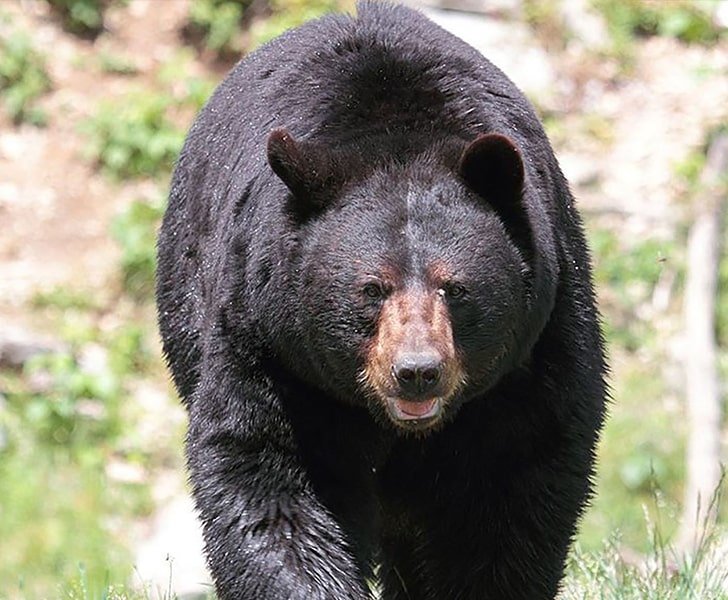
Another thing influencing Su's state of mind was the fact that she had already bonded with Little Black. Yet despite her affection toward him, she just couldn’t shake the feeling that he would gobble up her and her family if he ever became sufficiently famished.
So Su simply kept on feeding Little Black as she considered the best course of action. After a while, it occurred to her that she should call the local animal rescue team. After all, they would know what to do in this kind of situation.
Confessing That Her Pet Was A Bear
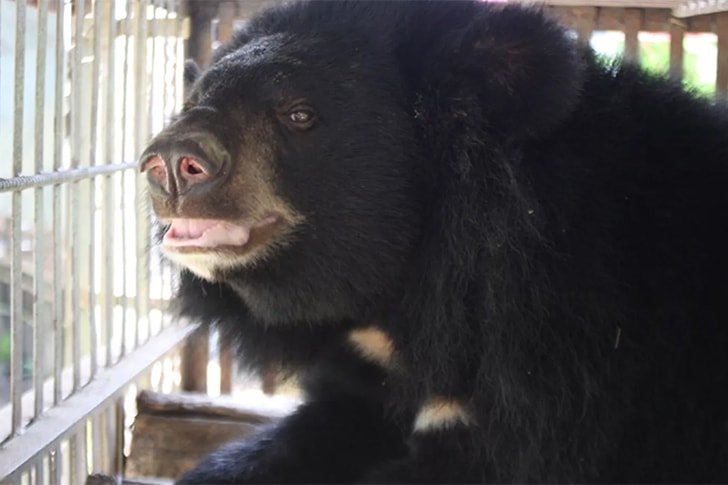
Having made her decision, Su picked up her phone and called the police to voice the suspicion that she had hidden for so long: Little Black was a bear. She then hastily added that she had thought her pet was a Tibetan mastiff at first.
Su was horrified when she found out that it was illegal to domesticate wildlife. She had been unaware that she was violating the local forest public security laws. Within only a few minutes after speaking to Su, the authorities came to her home to investigate.
The Local Authorities Came To The Rescue

As soon as the police saw Little Black, they immediately knew what they had to do. After quickly verifying that Su was telling the truth, they called in the assistance of the Yiliang County Forest Public Security Bureau. The animal rescue team then took it from there.
The team first gave the domesticated bear a quick checkup, determining that Little Black had grown to a height of one meter and a bodyweight of roughly 200 kilograms. They explained that his growth spurt, though irregular for a dog, was normal for a bear.
Found In Good Condition

After measuring Little Black's weight and height, the animal protection specialists checked the Asiatic black bear to see whether he had developed any symptoms of disease or had any scars on his body. They found him to be in perfect health without a single blemish.
Having determined that Little Black was in excellent physical condition, they went on to administer a sedative to him before taking him to the local animal shelter. Even though he was domesticated, the team didn’t want to take their chances with such a large bear.
A Few Pointers To Raise Awareness

Before taking Little Black to Yunnan Wildlife Rescue Center for more checkups, the forest public security team took the time to explain everything about the situation to Su. Raising awareness was important to them because this was becoming more and more of a trend in China.
The team reminded Su that all animals under the government’s protection couldn't be hunted, killed, domesticated, bred, or sold, among other things. They also made sure she understood that anyone keeping one of these animals without a permit was subject to punishment as determined by a court of law.
A Sad Departure
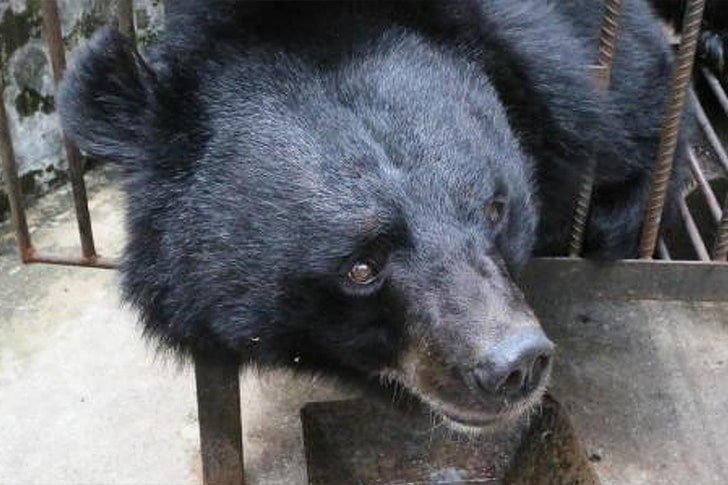
Just after Little Black was transferred to the animal shelter, Su and her family confessed that they couldn’t help but feel a little sad about parting ways with him. Despite everything that had happened, they still considered him to be a member of the family.
The family may have been scared of Little Black toward the end, but the two years they spent with him weren’t something they wanted to just disregard. They probably wouldn't need therapy for their sorrow, but they really hoped he would end up in a better place.
Embarrassed By Her Grave Mistake
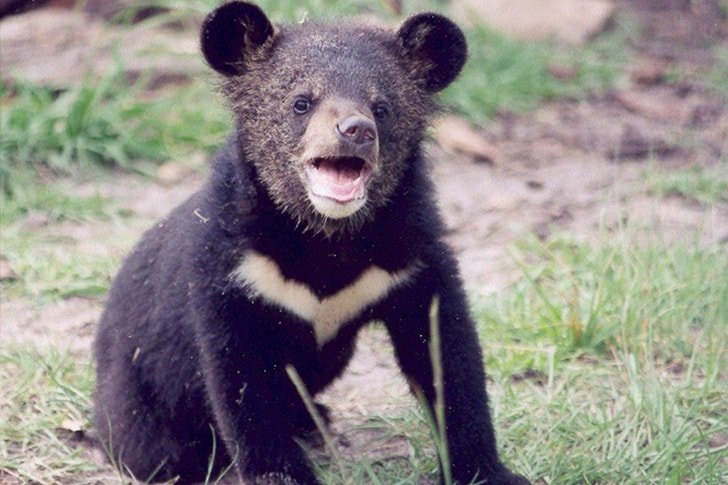
Su was sure the person who had sold her Little Black had known exactly what he was doing, but all he had cared about was making money. She had been allowed to believe that she had bought a Tibetan mastiff, so she had taken a bear home to her family.
Su couldn’t help but feel ashamed that it took two years for her to realize the truth that was staring her in the face. But she really shouldn't have felt this way. After all, it wasn't the first time an incident like this had occurred.
Bear Cubs Look Like Puppies
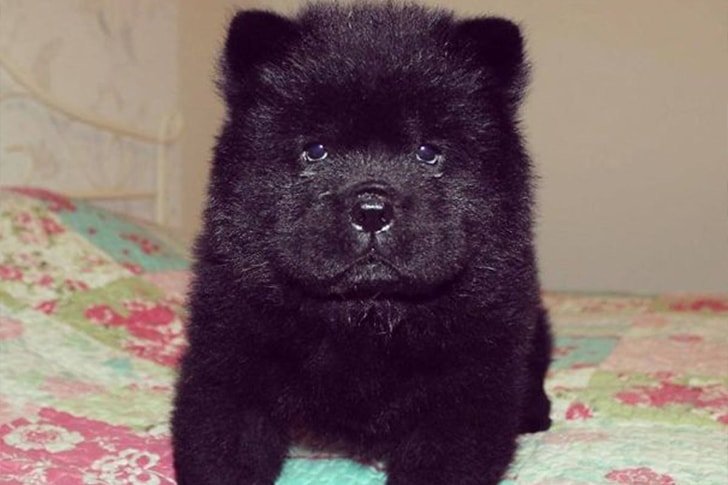
Through the years, the Chinese authorities have already been getting lots of reports about similar circumstances all over the different parts of their country. Because of their fluffy appearance, bear cubs look a lot like puppies of big dogs, and many people can't tell the difference.
Besides, how can anyone resist adopting one of these little cuties, even if they haven't been honestly come by? But then again, we can only imagine the sadness and separation anxiety that these bears cubs must have felt after being taken from their mothers, and vice-versa.
All About Asiatic Black Bears
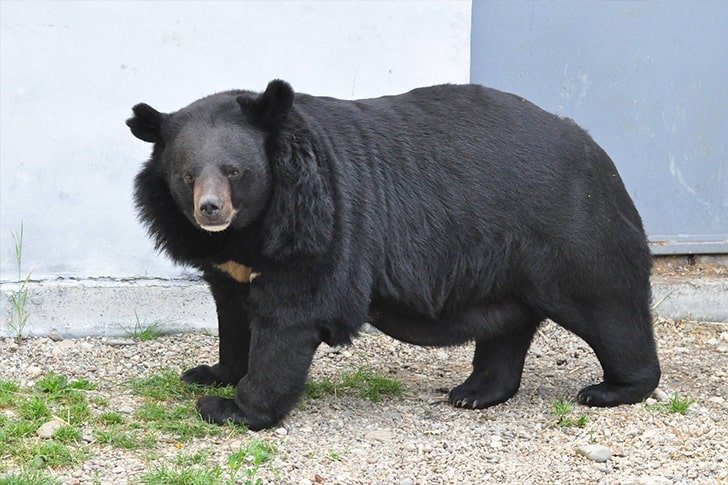
For those of us who don't know, Asiatic black bears are usually found in the Himalayas and Southeast Asia. They're also known as Tibetan bears, moon bears, sun bears, or Himalayan bears. These animals are omnivorous, which means they can eat both plants and other animals.
Known for their enormous bulk, Asiatic black bears typically have a brownish or black glossy coat with one distinctive feature. They normally have a whitish marking across the chest area that is very similar to a crescent moon in appearance, especially when they stand upright.
Known For Their Medicinal Properties

Asiatic black bears are quite famous in countries like South Korea, Japan, Singapore, and China in particular. In these countries, the internal organs of Asiatic black bears are used for medicinal purposes. These animals are believed to be a cure for a variety of ailments, from cancer to chronic infections.
For thousands of years, traditional Asian medicine has used bear bile because it has high levels of ursodeoxycholic acid, which is said to treat liver and gallbladder conditions. Nonetheless, we now have many effective herbal and synthetic substitutes. Traditional medical practitioners also agree that no one’s going to die for lack of bear bile.
The History Of Bear-Bile Farming
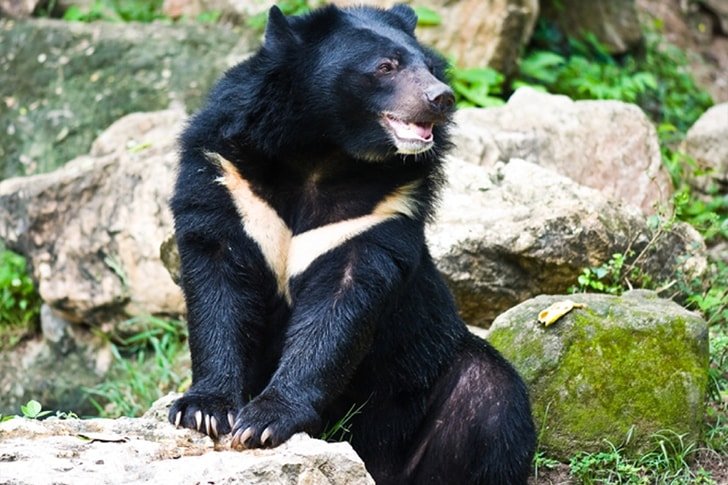
The practice of bear-bile farming in China began in the '80s as a means to continually extract bile over the course of a bear’s life. Hunting, killing, or selling bears from the wild may be prohibited, but sadly these farms are still considered perfectly legal.
Large bear-bile farms are typically owned by major Asian pharmaceutical companies. And even with all these farms to satisfy the huge demand for bear bile, the number of wild Asian black bears has continued to decline because of illegal hunting as well as habitat depletion.
Little Black Was From The Black Market

Since Asiatic black bears are very common in China, it wasn’t really that unlikely that Su and her family met Little Black. As of 2013, it has been estimated that there are at least 100 bear-bile farms holding from 90,000 to 200,000 bears.
It is rather puzzling, however, that Su was sold this bear as a dog. Little Black could've easily fetched a large sum of money if he were sold on the black market. But maybe it was a small act of mercy that he was spared a lifetime of pain. Most captive bears aren't so fortunate.
The Suffering Of Captive Moon Bears
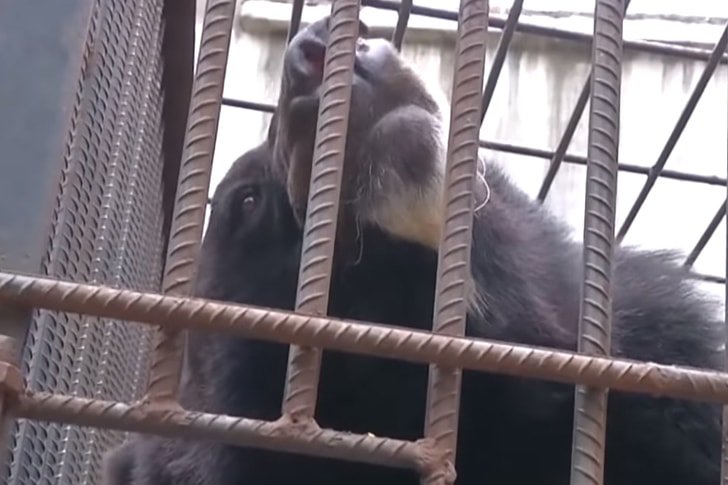
The process of extracting bear bile is excruciatingly painful and inhumane. More often than not, it is conducted by people who aren’t even veterinarians and have no qualifications to do it. The worst part is that some bears are subjected to this cruelty for their entire lives.
If the bears don’t succumb to infections, tumors, or self-inflicted injuries, they can suffer up to 20 years of agony. Bears in this sickening industry often whimper and rock in their distress, while many have harmed themselves from gnawing on the bars of their cages.
A Story Picked Up By The National Geographic
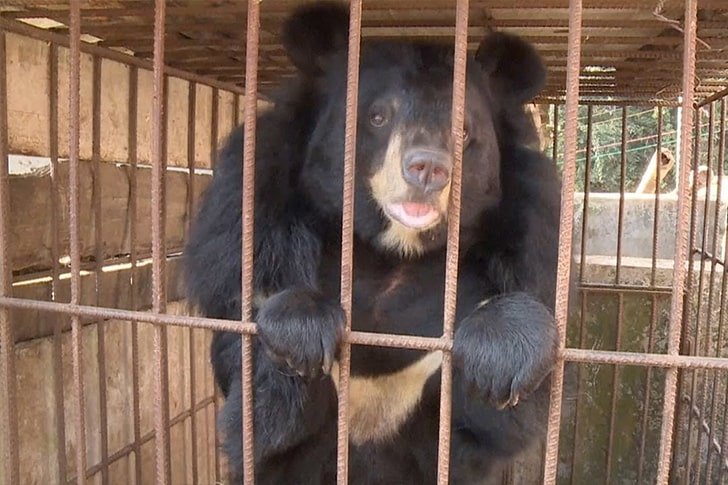
The wild discovery that was made by the Chinese family in this tale was something that generated a lot of attention and coverage like some kind of celebrity news. It was so fascinating that it was talked about all over China. But that’s not where it stopped.
When National Geographic wrote about the news on their website, it got hyped more. People worldwide found the story interesting because it truly was. And National Geographic entering the picture only proves the relevance of Little Black, who we’ll introduce to you right now.
The Local Authorities Were Involved At Some Point
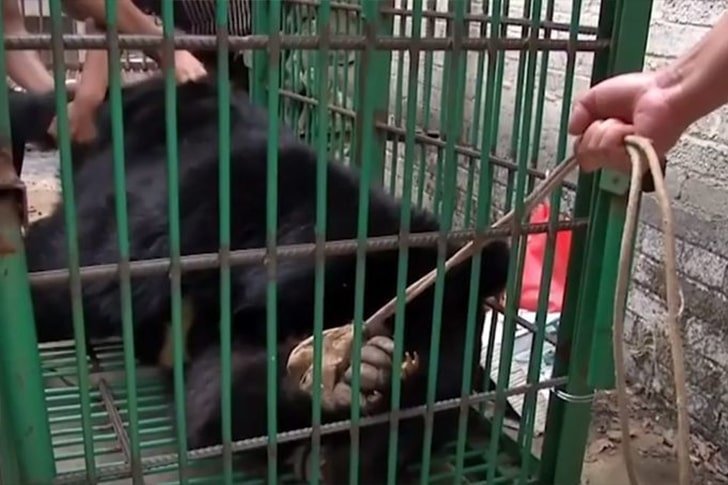
We’d like to start out this story by telling you that this really is no ordinary story, in fact, it’s not even something that has a happy ending. And as much as we’d love to think that this will give you all butterflies and smiles, it won’t. However, it is an important story to tell, and that’s why we’re telling it.
To give you a clue on the gravity of this story, we’ll tell you right now that the Chinese family in this tale got the local authorities involved at some point, all because of what they found out about their adopted dog.
Su's Story Isn't Unique
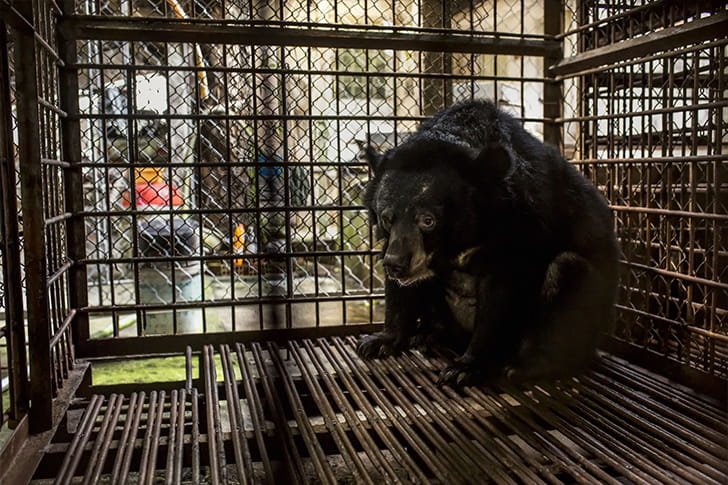
Even though Asiatic black bears aren't a rare sight in China, it seems that Chinese citizens have a hard time distinguishing between bear cubs and other juvenile animals. And with so many bear farms all over China, bear cubs can be found everywhere in the country.
It makes sense, then, that mistaking bear cubs for puppies of large breeds happens all the time in China, especially for people who need eyeglasses. There have been several examples of these incidents recorded through the previous years. One particular story is very similar to Su's.
The Case Of The Small Milk Dog
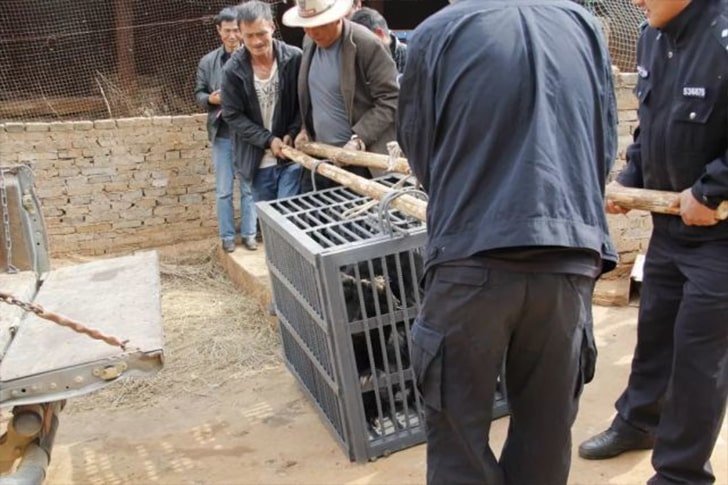
In 2015, a farmer from the city of Lijiang who was visiting the highlands rescued what he thought was a small milk dog. The man soon felt affection for this creature, but at the time he had no clue that it wasn’t what he thought it was.
The farmer shared his mattress and his food with the little creature until he noticed that it hadn’t stopped growing. It wasn’t until he saw its developing features that he recognized his "small milk dog" was actually a black bear. So he reluctantly turned it in to the local authorities.
Someone Else Felt The Same Way

There was another farmer in 2015 who also fell for a black bear, thinking that he was a cute puppy dog. This time it was in Yunnan, where he met the abandoned little pup (or so he thought) just outside his neighborhood.
The farmer opted for adoption, taking him in and naming him Scorpion. Just like Su, he fed him a lot, since he was so good at eating. The difference was that even when he found out what Scorpion was, he kept him anyway. They were separated only after he was reported to the local authorities.
The Fight To Free The Bears Continues
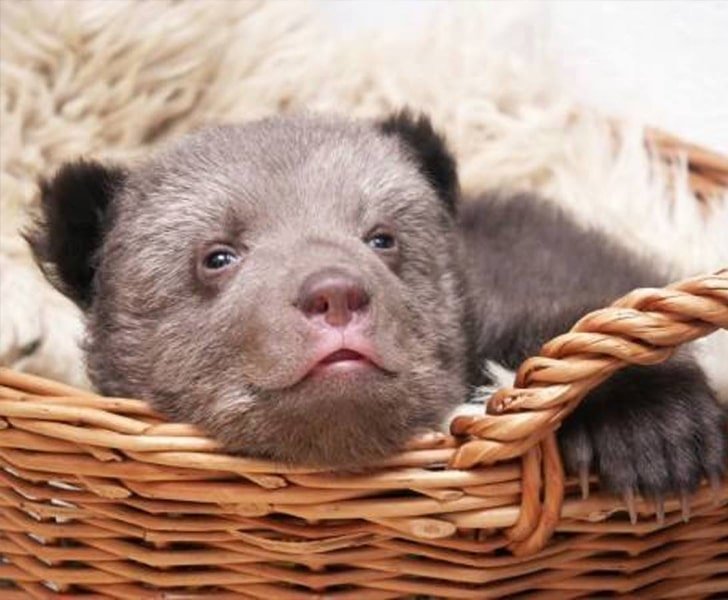
Clearly, many people have grown to love these animals even though they’re meant to be in the wild. But perhaps that would be better for the bears than being painfully exploited for the sake of filling the bank accounts of heartless companies funding bear-bile farms.
Many petitions have been made to free Asiatic black bears, but the government of China still hasn’t buckled, allowing the trade to continue because of the demand for it. We only hope that they would follow Vietnam's example, where 97% of traditional medical practitioners don’t prescribe bear bile anymore.
